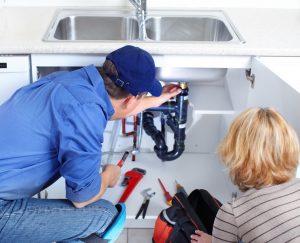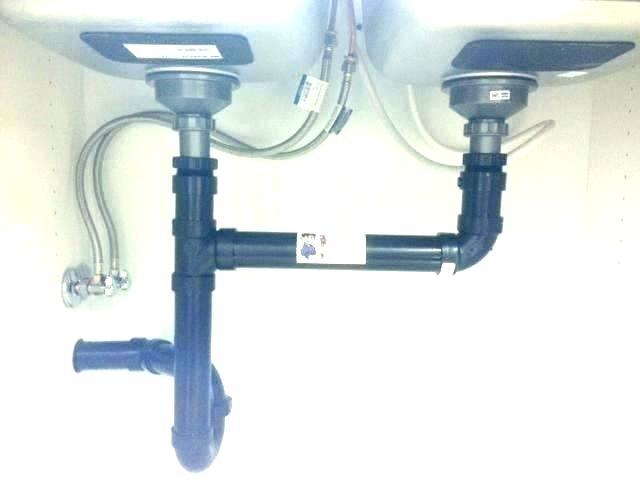Straightforward Ways to Repair a Leaky Waste Disposal Unit
Straightforward Ways to Repair a Leaky Waste Disposal Unit
Blog Article
What're your thoughts on The Handy Guide To Fixing Your Garbage Disposal Leaking?

Waste disposal unit are essential kitchen home appliances that aid in getting rid of food waste effectively. Nonetheless, a leaking garbage disposal can be a discouraging and messy trouble to take care of. Luckily, many leakages can be fixed conveniently with a few basic steps. In this article, we will certainly review exactly how to deal with a leaking garbage disposal successfully.
Intro
Garbage disposals are installed under cooking area sinks and are made to shred food waste right into smaller items, allowing it to pass through the pipes system conveniently. While these tools are normally dependable, leakages can take place gradually due to deterioration, loose links, or damage to the unit.
Step-by-Step Guide to Dealing With a Dripping Waste Disposal Unit
Turn Off the Power
Before trying any kind of repair services, guarantee that the power to the garbage disposal device is turned off to stop the danger of electrical shock.
Locate the Leakage
Recognize the specific area of the leakage and determine the cause
Tighten Links
Utilize a wrench to tighten any kind of loose connections between the disposal device and the plumbing system.
Change Seals or Gaskets
If the leakage is because of used seals or gaskets, remove the old components and change them with brand-new ones.
Patching Fractures or Openings
For fractures or openings in the disposal device, usage epoxy or a suitable patching material to secure the damaged location.
Recognizing the Source of the Leak
Prior to trying to fix a dripping waste disposal unit, it is essential to determine the source of the leakage. This can typically be done via aesthetic inspection or by performing basic examinations.
Visual Evaluation
Examine the garbage disposal system meticulously for any indications of water leakage. Pay attention to locations around seals, gaskets, and link points.
Testing for Leaks
One means to examine for leaks is by running water with the disposal device and looking for any type of noticeable indications of leakage.
Usual Causes of Leakages in Trash Disposals
Worn Seals and Gaskets
Seals and gaskets play a crucial role in protecting against water from dripping out of the waste disposal unit. With time, these elements can degrade, bring about leaks around the disposal device.
Loose Connections
The links between the waste disposal unit and the plumbing system can become loosened over time, causing water to leak out throughout operation.
Cracks or Openings in the Disposal System
Physical damage to the waste disposal unit, such as splits or holes in the housing, can additionally lead to leaks.
Devices and Materials Needed for Fixing a Dripping Waste Disposal Unit
Before beginning the repair process, gather the essential devices and materials, consisting of a screwdriver, flexible wrench, plumbing technician's putty, replacement seals or gaskets, and epoxy or patching material for repairing splits or holes.
Checking the Garbage Disposal After Repair
When the fixing is complete, examine the waste disposal unit by running water through it to guarantee that the leakage has been fixed.
Preventive Upkeep Tips to Stay Clear Of Future Leaks
To prevent future leaks, it is important to carry out routine maintenance on your garbage disposal. This includes keeping it clean, preventing putting non-food products or difficult items down the disposal, and occasionally looking for leaks or various other issues.
Final thought
To conclude, fixing a dripping garbage disposal is a relatively uncomplicated process that can be completed with fundamental tools and materials. By following the steps outlined in this short article and practicing preventive maintenance, you can maintain your garbage disposal in good working condition and prevent costly fixings in the future.
What to Do About a Leaking Garbage Disposal
A leaking garbage disposal often goes unnoticed until you confront a sopping cabinet, a foul-smelling puddle, or an audible drip-drip-drip from the unit. The fix can be frustrating, too, because the leak can stem from a number of components in the system. Fortunately, with a little sleuthing, you can zero in on the leak and—depending on the exact location—stop the icky oozing and repair the component that caused it. Worst case scenario, if it turns out that the garbage disposal must be replaced, installing a new one is a reasonable do-it-yourself task for those with basic plumbing skills. Read on to keep the cash you’d otherwise hand over to a pro.
Prepare to find the leak
Prior to testing the garbage disposal for leaks, unplug it at the wall outlet and turn off the power from the breaker box to prevent electrical shock. Then insert a watertight sink stopper into your sink drain and wipe the unit dry with a clean cloth. In any handy container, mix a few drops of food coloring into a few cups of water, and pour the dyed water onto the sink stopper to help you locate the leak.
Investigate the source
the top, where the disposal meets the sink drain the side, where the dishwasher hose or main drain pipe connects to the disposal or the bottom of the unit Inspect each of these locations while gliding a light-colored rag over the unit; the dyed water will readily show on the rag and reveal the location of the leak. If a leak isn’t immediately apparent, remove the sink stopper and pour a few more cups of dyed water down the sink drain, then check for leaks again. Leaks near the top of the unit are more likely to show themselves while the sink is plugged, while side and bottom leaks are more noticeable while the sink is unplugged.
The metal sink flange that sits directly inside the sink drain is typically sealed around the top with plumber’s putty (a clay-like sealant) and then secured from under the sink with bolts. If the plumber’s putty deteriorates, or the bolts loosen, the flange can no longer form a watertight seal between the sink drain and the disposal—which could cause a leak at the top of the unit.
To reseal the leaky flange, you must first detach the garbage disposal. Start by loosening the screws securing the main drain pipe to the disposal, then loosen the screws in the metal clamp securing the dishwasher hose to the disposal and detach the drain pipe and dishwasher hose from the disposal. Loosen the screws in the mounting ring that connects the disposal to the metal mounting assembly beneath the sink, then pull down the disposal and carefully set it on a clean, dry surface. Loosen the bolts in the mounting assembly with a wrench, then pull down the mounting assembly and set it near the disposal.

Do you like more info about Garbage Disposal Leaking From Bottom? Leave feedback down below. We will be interested to hear your views about this piece. Hoping to see you back again before long. If you liked our post plz make sure you remember to pass it around. We thank you for reading our article about How to fix a pretty consistent leak from my garbage disposal.
Find Out More Report this page